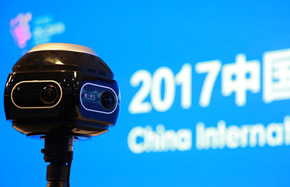Ending non-tariff barriers can lift global trade
Reducing non-tariff trade barriers may increase China's economic output by 2 to 3 percent, a report indicates, promoting the country's transformation to a consumption-based economy.
The establishment of the Shanghai free trade zone is likely to ease concerns over market access, which is identified as one of the major non-tariff obstacles, experts said.
Eliminating supply chain hurdles can expand trade by 15 percent, according to a study by the World Economic Forum, in collaboration with consultancy Bain & Co and the World Bank.
"The reason is that it eliminates resource waste, whereas abolishing tariffs mainly reallocates resources.
"Moreover, gains from reducing barriers are more evenly distributed among nations than those from eliminating tariffs," said Gerry Mattios, principal of Bain and co-author of the report.
It is also a great opportunity for China as it seeks to combat a temporary growth slowdown without actually producing more, he noted.
Four major barriers are highlighted in the study: market access, border administration, communications and transport infrastructure and the business environment.
Mattios said that China has taken the lead in hardware construction, where transportation infrastructure, the availability and quality of transport services and information technology are made viable.
But the primary concern is the difficulty of market access, a broad area that includes safety and health requirements, technical standards, local content rules and other regulations that impose restrictions on foreign businesses.
The Shanghai FTZ is a step in the right direction in facilitating market access, said Mattios.
"I think a lot of companies are looking forward to the zone to overcome this barrier, because it is expected to enable foreign companies to set up operations more easily and consequently facilitate trade," he said.
Meanwhile, on the regulatory front, areas such as the efficiency of customs administration also need to be enhanced, Mattios noted.
Inefficiency usually reflects an insufficient allocation of resources to customs agencies or a failure to adopt best practices in customs procedures.
"For instance, if the customs office introduces electronic processes and allows submission of paperwork in advance, companies may reduce the waiting time of their containers at ports from the current three to five days to just a few hours," he said.
Chinese companies can on average generate 15 percent more revenue if their supply chains are simplified, he added.
The public and private sectors should also learn to embrace the concept of non-tariff barriers.
"Our experience showed that companies used to focus a lot on growth and market share, but not enough on logistics, which greatly affects business efficiency. "

























